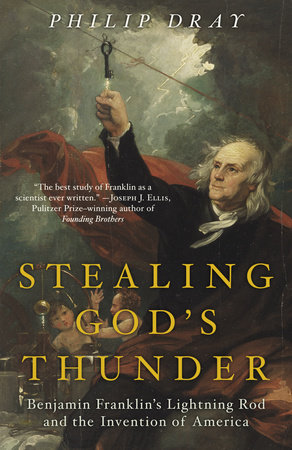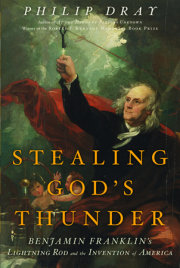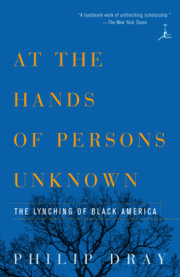Chapter 1
“COTTON MATHER,
DAM YOU,
WITH A POX TO YOU”
Benjamin Franklin was born in Boston on January 17, 1706, the fifteenth of the seventeen children of Josiah Franklin, and the eighth child of his father’s second wife, Abiah Folger. The Franklins lived on Milk Street, across from the South Church, where Josiah was a leading member of the congregation. Ben was carried across the street and baptized there on the day of his birth. The Franklins ran a soap- and candle-making business, and Josiah was also active in the community; he had served as a constable of the town watch and also in the public markets, neighbors sometimes came to him for advice, and the son would recall that his father’s “great Excellence lay in a sound Understanding and solid Judgment in prudential Matters, both in private and publick Affairs.”
While still a toddler, Ben struck his parents as having the bearing of a scholar. “I do not remember when I could not read,” Franklin later said. An uncle (also named Benjamin) who resided with the Franklins and took a special interest in his namesake perceived something remarkable about his clever nephew, and wrote of the boy, “If the Buds are so precious what may we expect when the fruit is ripe?” Josiah prided himself that his youngest son might possess the makings of a clergyman, although Ben’s unsuitability for the role manifested itself early on in ways large and small, such as when he suggested to his father that if all the meat being salted for the family’s winter provisions was blessed at once, the family might avoid having to say grace at each meal and “it would be a vast saving of time.” In any event, the prerequisite education for the clerical calling proved too costly, and after completing barely two years of school, Ben was put to work in the family shop.
Boston in the early 1700s was a thriving port of about ten thousand inhabitants, the third largest shipping mecca in the British empire, with fifteen shipyards and hundreds of wharves that teemed night and day with the loading and off-loading of goods and passengers. Ben was smitten with the magnificent sight of ships—the packets, cargo vessels, and men-of-war that stood shoulder-to-shoulder at the docks and whose vast sails filled the sky. The town’s seafaring character, with its inlets, rivers, bays, ponds, and coves, engendered in him a lifelong affection for boats and the sea. “Living near the water, I was in and about it, learnt early to swim well, and to manage boats,” he recalled.
As the adolescent leader of a ragtag army of boys who played around the large mill pond that began just beyond his father’s shop, Ben became dissatisfied with the speed he could obtain through his regular swimming strokes and experimented with ways to improve his efficiency by attaching “palettes” (flippers) to his hands and feet. Already a deft observer of the movements of air, water, and wind, he also conceived of a most uncommon experiment, flying a kite while submerged in the water. “Having then engaged another boy to carry my clothes around the pond, I began to cross the pond with my kite, which carried me quite over without the least fatigue and with the greatest pleasure imaginable.” As the kite drew him swiftly from one side of the pond to the other, a band of excited youngsters ran along the shore, shouting and encouraging his progress.
One of Josiah Franklin’s other sons, also named Josiah, had been lost at sea, and the father, concerned about Ben’s evident fondness for ships, sought to head off any seafaring inclinations the young boy might have. But Ben was clearly apathetic about work in the family trade, and the candle shop was not without dangers of its own: The boiling vat Ben was made to stir was the very one in which another brother, an infant named Ebenezer, had earlier drowned. “Under Apprehensions that if he did not find [a job] for me more agreeable, I should break away and get to Sea, as his Son Josiah had done to his great Vexation,” Franklin later wrote, Josiah determined to establish Ben in a trade. After a brief, unhappy turn at a cutlery shop, Ben signed papers of apprenticeship to a printing business owned by his older brother James.
James Franklin, nine years older than Ben, was a worldly sophisticate by Boston standards. In 1717 he had visited London, where he had been inspired by English satirists such as Joseph Addison, the Irish-born Jonathan Swift, and Daniel Defoe, and by the chatter of anti-authoritarian opinion in London’s Grub Street coffeehouses. James probably only marginally knew his kid brother and new apprentice, although it immediately became clear that Ben possessed the attributes necessary for work in a print shop—manual dexterity, mental quickness, and physical strength.
As Ben would remember, “In a little time I made great proficiency in the business, and became a useful hand to my brother.” He also dipped hungrily into James’s library, devouring books on arithmetic and navigation as well as the many pamphlets and sermons James printed that argued prevailing notions of theology, Deism, and natural philosophy. He read the Third Earl of Shaftesbury’s writings urging moderation in human affairs and an end to religious zealotry, John Locke’s An Essay Concerning Human Understanding, Daniel Defoe’s Essay on Projects, and Cotton Mather’s Bonifacius: An Essay Upon the Good—books that “perhaps gave me a Turn of Thinking that had an Influence on some of the principal future Events of my Life.”
In these books, Ben discovered a world of ideas to absorb and act upon. By the time he was a teenager, he had declared himself a vegetarian, perfected a “scientific” method of swimming, adopted Socratic inquiry as a means of arriving at truth, and embraced Deism, the belief that the world had been made by a gifted supreme being who was no longer a living feature of the cosmos. This deus absconditus, apparently pleased with his creation, had left it to its own devices; the Deists believed that God’s endowment to mankind was reason and the practice of benevolence toward others, and that Truth resided not in biblical aphorism but in nature.
The age in which Ben Franklin grew up, the early Enlightenment, was a time of expanding faith in individual experience and self-determination, an era of enlarged human curiosity, when advances in natural philosophy, science, and technology were curbing man’s reliance on magical or religious explanations for life’s hardships. Like all such epochs of cultural transition, it arose from sources both subtle and diverse, but certainly the English philosophers of the seventeenth century and their Scientific Revolution had helped set the stage. Its founding concepts lay in the ideas of Francis Bacon, who promoted the value of experimentation and promised that work in pure science would lead to useful applications, and John Locke, who urged that true knowledge came not from a perfected obedience to inherited beliefs but from mankind’s environment, as well as from the instruments that made new forms of observation possible, such as the microscope.
Hovering majestically above all was Isaac Newton, the guiding scientific thinker of his day, who showed in his Philosophiae Naturalis Principia Mathematica, published in 1687 and known as the Principia, that the functions of the universe were governed by mathematics. Copernicus had made the sun, not Earth, the center of the universe; Johannes Kepler described the planets’ orbits as ellipses; but where others glimpsed a corner of the tapestry, Newton saw that the whole—Earth and heavens alike—was a single system, bound by physical laws. “The new [Newtonian] mechanics was the first example of a modern science in its full development,” historian Dirk J. Struik notes, “equipped with a convincing set of axioms, a logical method, a developed technique and the power of forecasting events. Even those who could not master the details could admire and follow its general approach.” As Voltaire, who helped introduce Newton’s ideas in France, observed, “Very few people read Newton, but everybody talks about him.”
Such reorganization of human thought did not come altogether easily to the Boston of young Ben Franklin. New Englanders still lived to a great extent in “an enchanted universe”—a place of dark, impenetrable forests, vengeful thunderstorms, portentous comets, witches, and ghosts. A belief in Providential events and omens was common, as was the idea that an ongoing battle between Satan and God ruled many features of daily life. For people who suffered from a myriad of poorly understood health issues, whose children died in great numbers, and who had no other means of comprehending the phenomenal world, Providence and its signs offered at least the surety that man’s earthly trials had some purpose. “In place of unacceptable moral chaos,” writes the scholar Keith Thomas, “was erected the edifice of God’s omnipotent sovereignty,” a presence that seemed particularly reasonable given the Puritan assumption that God had a special interest in the fate of New England.
“Without doubt the Lord Jesus hath a peculiar respect unto this place, and for this people,” preached the influential Boston cleric Increase Mather. “Christ by a wonderful Providence hath dispossessed Satan, who reigned . . . in these Ends of the Earth for Ages . . . and here the Lord hath caused . . . New Jerusalem to come down from Heaven.”
This “peculiar respect,” however, contingent on the Puritans’ steadiness of faith, and known as the New England or Puritan covenant, seemed depleted of late. A bloody conflict with the Indians in 1675–78, known as King Philip’s War, had demoralized Massachusetts, Maine, Connecticut, and Rhode Island, and forced the settlers to recognize that they were capable of violent savagery equal to any the “savages” could offer. Fires among Boston’s wooden houses and narrow lanes had twice turned the city into a tinderbox, and in 1678 a deadly smallpox epidemic arrived.
In August 1682 a bright, portentous sign (soon to be known as “Halley’s comet”) crossed the New England sky, the mysterious celestial visitor raising what Increase Mather called “Heaven’s Alarm to the World.” In 1684 the long-standing charter of the Massachusetts Bay Colony was abrogated by the English crown, diminishing the hegemony of the Puritans and stirring political uncertainty. With disillusionment spreading, clergymen worried about increased Sabbath-breaking and even whispered about a rise in bestiality, a trespass so Godless it was punishable by death. Finally, in 1692–93, the infamous Salem witch trials occurred.
In the witchcraft cases, twenty individuals were put to death, many on what was known as “spectral evidence,” confessions by those who said they were afflicted by specters, or accusations by people who claimed to have seen their neighbors assume the forms of devils and witches. Cotton Mather, Increase’s son and a ranking clergyman in his own right, was asked by the judges to write a defense of the need for the trials. Cotton made a nominal argument against the future reliance on spectral evidence, but he was unable to keep himself from defending the Puritan authorities as he lambasted others for Sabbath-breaking, adultery, and drunkenness. Public unease over the executions, and new doubts about the legality of spectral evidence as proof, helped lessen the likelihood of further witch trials, but Mather’s arrogant, scolding rant was long remembered.
Ben’s introduction to the new intellectual currents crossing the Atlantic, gained among his brother’s books, was timely, for in the spring of 1721 a crisis arrived that would test some of these principles and plunge Boston, the Mathers, and both Franklin brothers into a maelstrom.
Men and women of the early eighteenth century called smallpox “the speckled monster.” Of all illnesses it was perhaps the most horrific, turning its victims into hideous sufferers, their limbs scarred, their faces suppurating with diseased pustules. Several earlier outbreaks in Boston had led to strict rules for the quarantining of incoming ships and their crews, but there had been no local epidemic since 1702, and by 1721 many of the former precautions had been allowed to lapse.
Thus an entire generation had grown up with no exposure to the disease when, on April 22, an epidemic rode into Boston Harbor aboard the H.M.S. Seahorse, en route from the West Indies. Within a few weeks the first cases of “the pox” were reported. Panic spread quickly across the Charles River to Cambridge, where Harvard canceled its June commencement exercises. As the disease claimed more victims, Governor Samuel Shute called for a day of fasting and humiliation on June 27 to combat whatever misdeeds “have stirred up the Anger of Heaven against us.”
No one watched these events more closely than Cotton Mather, minister at Boston’s North Church. In 1713, Mather had written the first layman’s guide to the treatment of measles, only to see his second wife, Elizabeth, three of his children, and his maid succumb to the disease—all in the same month. Mather had already lost his three oldest children to illness in 1687, 1696, and 1699, and his first wife, Abigail, had died in the smallpox epidemic of 1702. In total, he would lose two wives and thirteen of his fifteen children to disease (or, in one case, a birth defect), being survived by only two, Samuel and the roguish Increase, Jr., known as “Creasy,” who had recently devastated his father by dropping out of Harvard and “getting an Harlot big with a Bastard.”
For some time Mather had nurtured an interest in a little-known method of disease prevention known as inoculation, which he had first learned of from his slave, Onesimus, who had come to Mather in 1707 as a gift from his congregation. Other slaves confirmed Onesimus’s claim that, in Africa, inoculation—inserting a small amount of diseased material in a vein to promote a mild case of smallpox so a greater one would be avoided—was practiced and had proven effective. In 1713 Mather had become one of the first Americans elected to the Royal Society of London, the most prestigious scientific organization in the world. (Its founding in 1662 was inspired by Bacon’s tenet that science be a collaborative undertaking. The Society’s motto, “Nullius in verba” [“On the word of no one!”], honored the idea that science must rest on observation.) Cotton sent eighty-two letters describing American natural curiosities and his experiments in corn hybridization to the Society between 1712 and 1724.
Mather saw not dissonance in the twin callings of science and faith, but a powerful unification. “[Natural] Philosophy is no Enemy, but a mighty and wondrous Incentive to Religion,” he wrote. “The Whole World is indeed a Temple of God, built and fill’d by that Almighty Architect.”
In 1699, the Royal Society had learned of early inoculation procedures in China, and beginning in spring 1714, accounts of inoculation began to appear in its publication, the Philosophical Transactions. A report by Dr. Emanuel Timonius, a graduate of Oxford, was paired in an edition of 1716 with an account by Dr. Jacobus Pylarinus, who had learned of inoculation being practiced in Turkey. Mather also may have heard reports of Lady Mary Wortley Montagu, wife of the British consul in Constantinople, who reported in 1717 that Turkish peasant women held “smallpox parties” for “engrafting” others with a minute amount of smallpox matter.
In England, inoculation, known as “buying the small pocks,” was tested on prison inmates and began to gather adherents, although not quickly enough for Mather. “How does it come to pass that no more is done to bring this operation into experiment and into Fashion in England?” he demanded of a London correspondent in 1716. “For my own part, if I should live to see the Small-Pox again enter into our city, I would immediately procure a consult of our Physicians, to Introduce a Practice [inoculation], which may be of so very happy a Tendency.”
Mather was one of the few people in North America who had examined pustules of smallpox through a microscope, and even as from his pulpit he continued to deliver fiery jeremiads about sin and the Providential calamities that awaited nonbelievers, he quietly came to embrace a most rational notion, later to be known as “germ theory,” the idea that pathogenic animalcules carry disease. “Every part of matter is peopled,” he wrote. “Every green leaf swarms with inhabitants. The surfaces of animals are covered with other animals. Yea, the most solid bodies, even marble itself, have innumerable cells, which are crowded with imperceptible inmates.” These tiny animals, breathed in by humans, he believed, could attack the body’s organs. By receiving inoculation in the arm, however, a person gave his body’s natural defenses an opportunity to confront the invader at a safe, manageable remove, before the organs could be reached.
Copyright © 2005 by Philip Dray. All rights reserved. No part of this excerpt may be reproduced or reprinted without permission in writing from the publisher.









